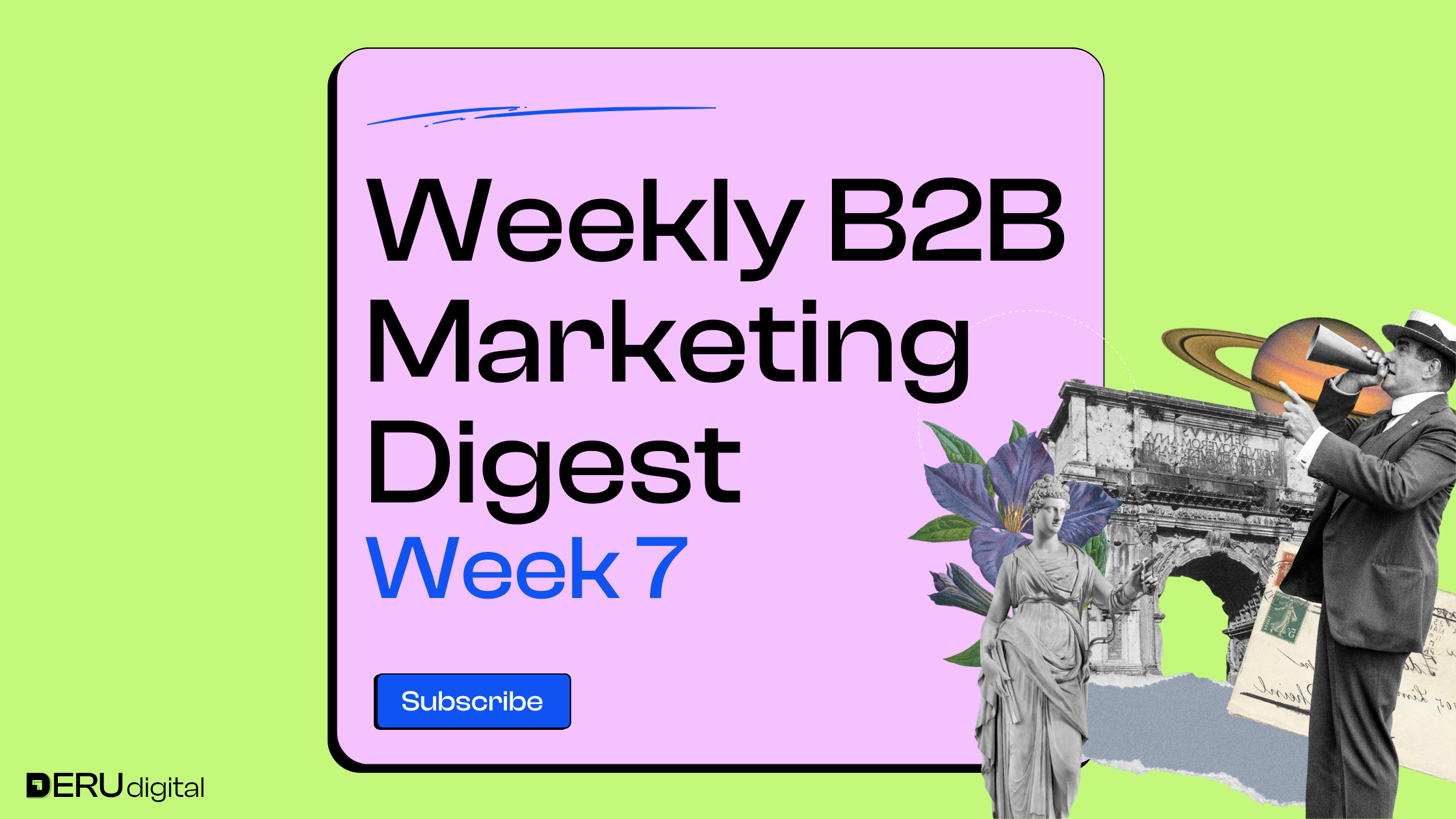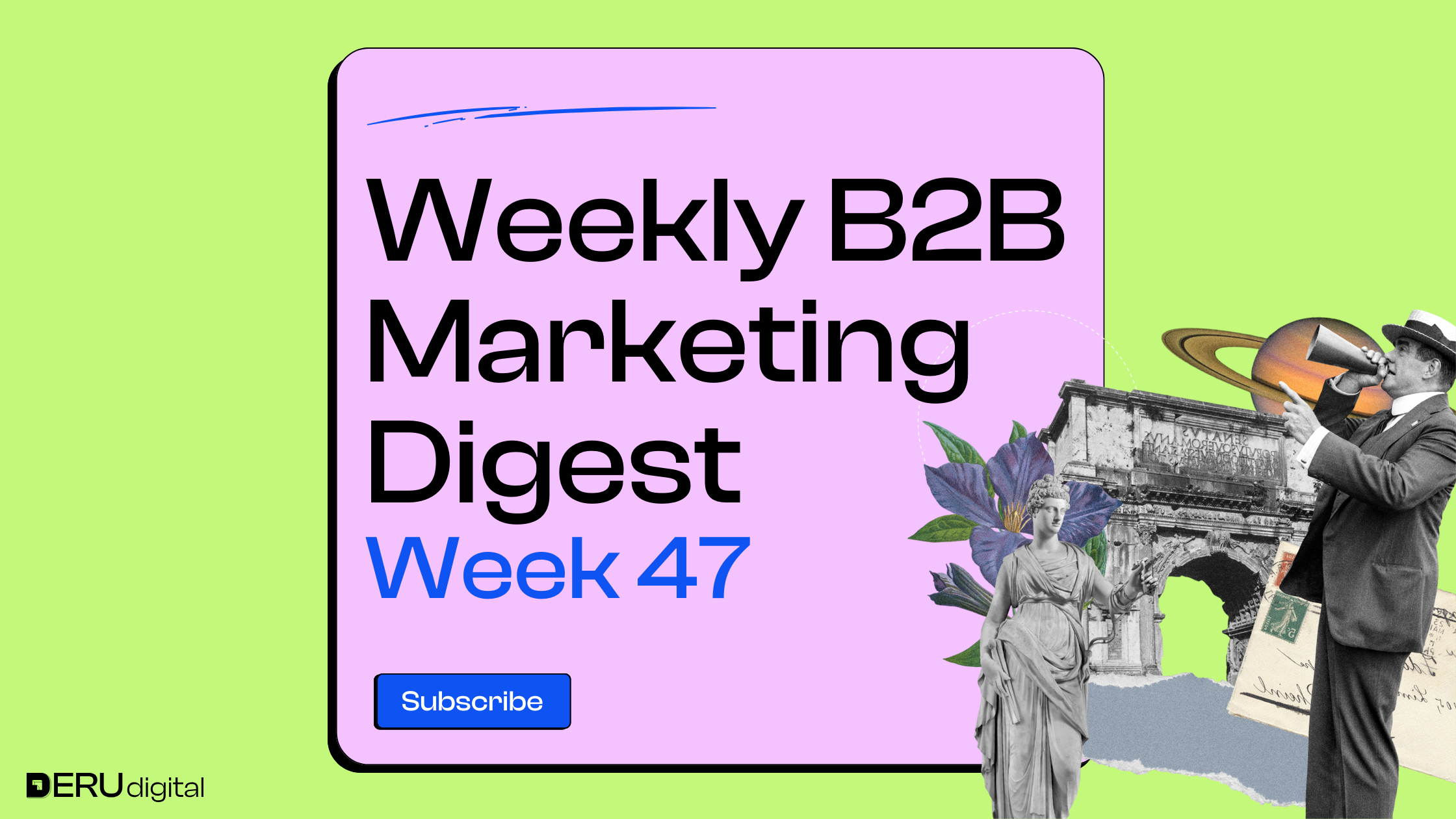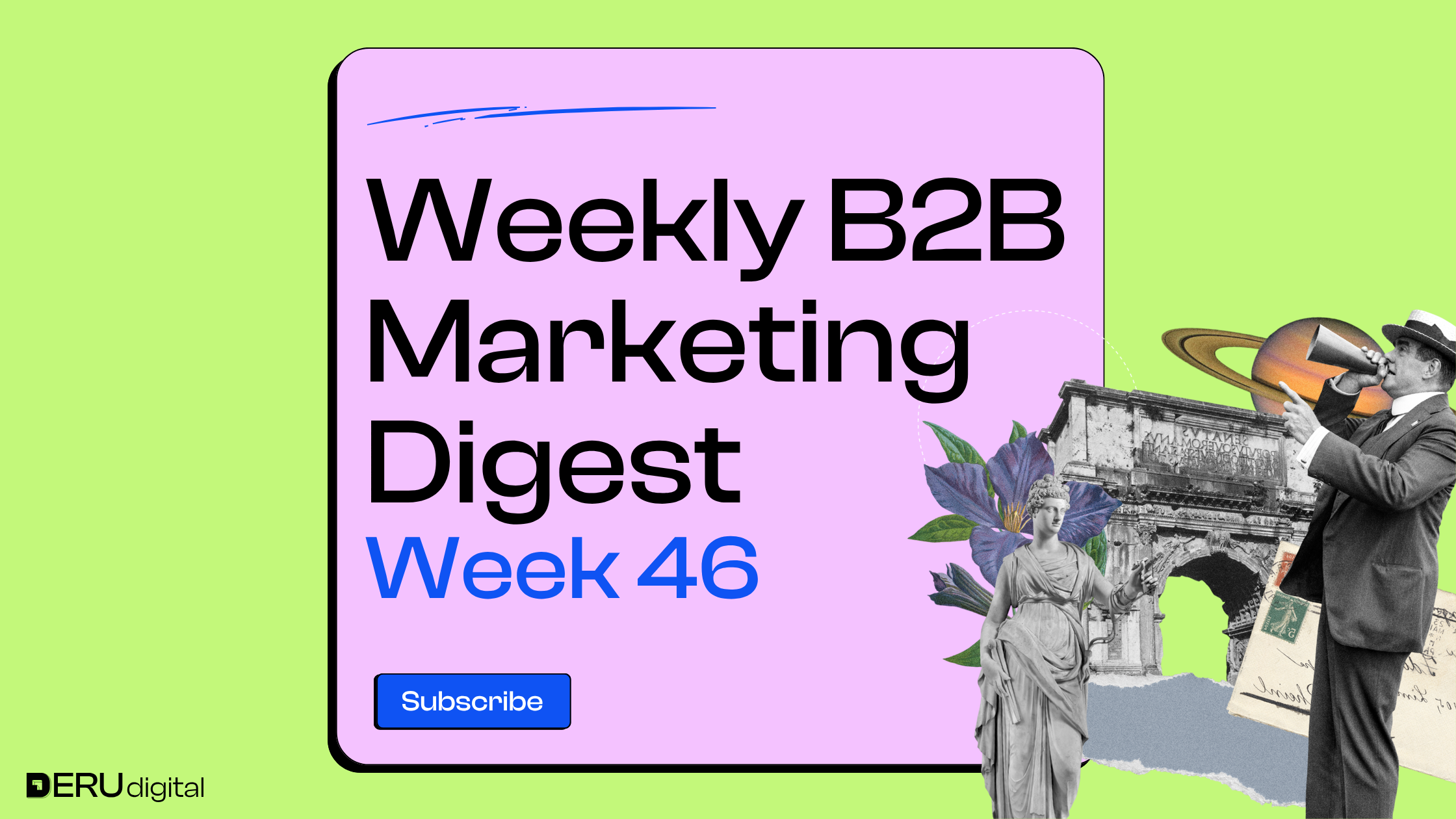INSIGHTS FROM EXPERTS ON LINKEDIN
Steffen Hedebrandt highlights that moving upmarket takes more than just a leadership decision – it requires every department to adjust their approach. At Dreamdata, they reshaped RevOps to focus on ideal customers and prioritized marketing channels that allow control over company size. A structured, step-by-step strategy is key to successfully landing bigger accounts.

Liam Moroney emphasizes that performance marketing depends on brand marketing to be sustainable and effective. Without brand awareness, companies are forced to rely on discounts and promotions, which drive up acquisition costs. The best approach is to balance both strategies, ensuring brand creates demand while performance marketing captures it.

Sam Kuehnle challenges the idea of assigning credit to individual marketing channels, pointing out that real customer journeys are complex. A recent demo request at his company took 10 months, involving a blog, a podcast, email distribution, and word of mouth. Instead of focusing on attribution, marketers should focus on creating more journeys like this.
Ivars Krutainis 🦦 points out that most LinkedIn impressions happen on mobile, yet many businesses still use horizontal assets that appear small and ineffective. He recommends designing in square format for the best cross-device performance, with vertical assets being useful but missing out on desktop impressions. His simple rule: square is safe, vertical depends, and horizontal should be avoided.

Patrick Cumming shares data showing LinkedIn Ads deliver the highest ROI for B2B, far outperforming Google Ads and review sites. He breaks down a two-part strategy: demand generation campaigns to build awareness and demand capture campaigns to convert high-intent prospects. His key takeaway – match the right content with the right audience at the right time to drive results.
Kevin Hjorslev explains that LinkedIn Ads run on an auction system where both bid price and ad relevance determine who wins an impression. A higher relevancy score can beat a higher bid, making ad quality just as important as budget. Since LinkedIn uses a second-price auction, advertisers only pay slightly more than the next highest bid, making manual bidding a smart strategy.

Dale W. Harrison pushes back against the myth that brand marketing takes too long to show results. While performance marketing targets in-market buyers, brand marketing builds lasting memory associations that make future conversions easier. Done right, brand campaigns work immediately on active buyers while setting the stage for long-term growth.

WHAT'S NEW IN THE INDUSTRY
Brands competed for viewers’ attention with ads released before and during Super Bowl 2025, using a “spike and sustain” strategy. Budweiser’s heartwarming “First Delivery” ranked first in USA Today’s Ad Meter, while Uber Eats’ celebrity-filled “A Century of Cravings” was a hit on social media. Analysts found that emotional ads, like the NFL’s “Somebody,” connected better with audiences than humor-driven ones, showing a shift in what grabs attention.
Google Ads is rolling out a feature that automatically shortens video ads for Demand Gen campaigns to boost engagement on mobile and social media. The feature is turned on by default, but advertisers have until March 10 to opt out. While this tool helps businesses reach more people with less effort, marketers should check that the shortened videos still match their brand message.

AI tools like ChatGPT are making it easier for B2B buyers to research and choose vendors, with 90% already using them. Brands that appear in AI-powered searches have a big advantage, as ChatGPT-driven recommendations are boosting sales. To stay competitive, businesses should check how they show up in AI searches, create useful content, and use AI-driven data to reach buyers at the right time.

Starting in March, Google Ads will require advertisers to document their business names and logos, or Google will automatically choose “top-performing” versions based on campaign data. This change aims to standardize brand presentation across Google’s ad platforms while giving businesses more control over their digital identity. To maintain consistency and avoid automated changes, advertisers should update their brand guidelines before the deadline.

Google Ad Manager, Campaign Manager 360, and Display & Video 360 are experiencing ongoing technical issues, causing errors, high latency, and disruptions for advertisers. The problems, which began on Feb. 11-12, have affected ad delivery and performance, with some video creatives stuck in processing. Google is investigating and will provide updates as they work on a fix.

Google Ads has launched the Performance Max Usefulness Indicator, a tool that helps advertisers see if their search themes drive new traffic or overlap with existing signals. This feature provides more insight into campaign performance, helping advertisers refine their targeting and budget allocation. However, control over specific search queries remains limited due to Google’s AI-driven approach.

Starting April 7, 2025, Google will cap Customer Match list durations at 540 days, meaning advertisers must refresh their customer data more frequently. This change aligns with privacy trends but may impact campaign performance if audience sizes shrink as memberships expire. Advertisers will need to regularly update their lists to maintain effective targeting and avoid disruptions.
That’s the scoop for this week! If you found this valuable and any useful insights caught your eye, feel free to share them with your network.
Until next week!
#ppc #paidads #demandgeneration #demandcapture #googleads #linkedinads #facebookads #twitterads #microsoftads #b2b #b2bmarketing #twitterads #brand #paidstrategy #marketingstrategy #paidtips



